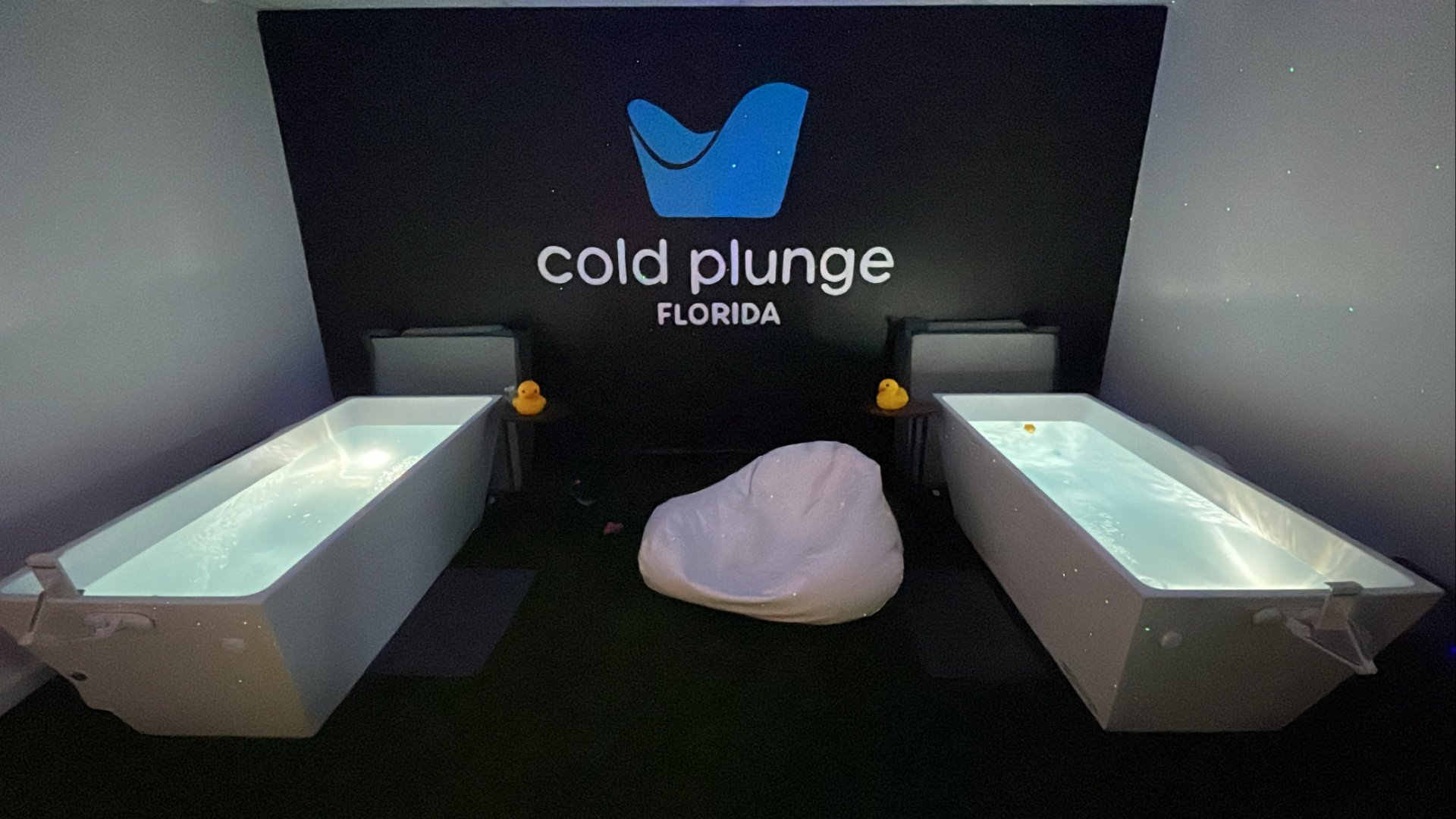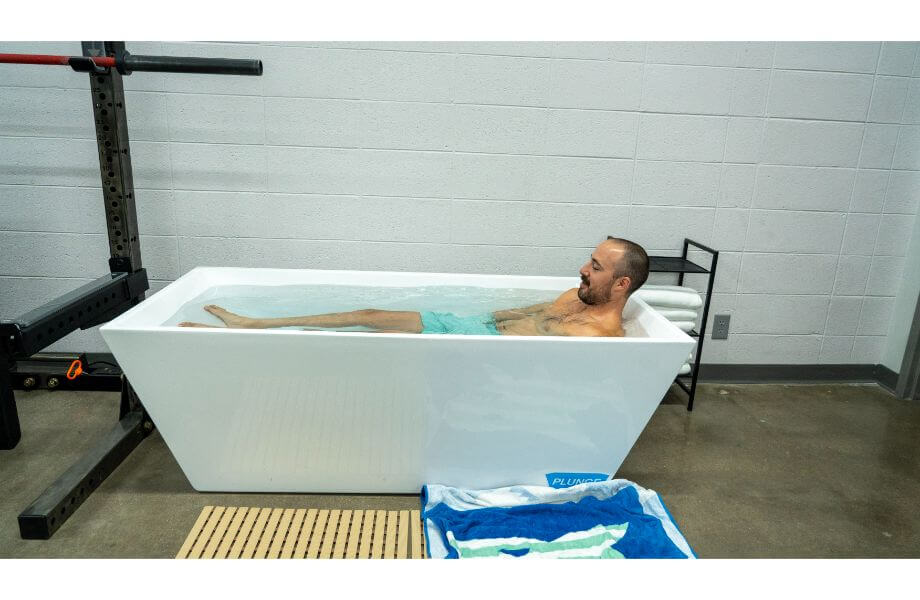Take The Plunge: Exploring The Benefits Of La Fitness Cold Plunge
Hey there, fitness enthusiasts! If you're looking to take your workout routine to the next level, you might want to dive into something a bit... icy. La Fitness cold plunge is one of those fitness trends that’s gaining serious traction lately. People are talking about it, and for good reason. Whether you're a seasoned athlete or just starting out, this icy dip could be exactly what your body needs to recover and recharge. So, let's dive in—literally and figuratively—and explore why everyone's buzzing about this refreshing trend.
Now, I know what you're thinking: "Cold water? Are you kidding me?" But trust me, there's more to this than just enduring a chilly splash. La Fitness cold plunge pools are designed to help with muscle recovery, reduce inflammation, and even boost your mental resilience. It's not just about braving the cold—it's about reaping the benefits that come with it.
Before we dive deeper into the science behind it, let's talk about why you should care. Whether you're a gym rat or someone who just wants to feel better after a long day, the cold plunge could be your new best friend. Stick around, and I'll break it down for you in a way that's easy to understand and totally actionable. Let's get started!
Read also:Eye Q Santa Cruz Revolutionizing Vision Care In Your Community
What is La Fitness Cold Plunge?
Alright, let's start with the basics. La Fitness cold plunge is essentially a dedicated cold water pool designed to aid in post-workout recovery. Think of it as the icy cousin of the hot tub, but instead of soothing warmth, you're getting a refreshing shock to your system. These pools are kept at temperatures ranging from 50 to 60 degrees Fahrenheit, which is just cold enough to give you that "oh no, I can't believe I'm doing this" moment, but not so cold that you're turning into a human popsicle.
The idea behind the cold plunge is simple: expose your body to cold temperatures to help reduce inflammation, flush out lactic acid, and promote better circulation. It's like a reset button for your muscles after a tough workout. And honestly, once you get used to it, it feels kinda amazing. Trust me, the initial shock is worth it.
Why Should You Try It?
So, why should you even bother with the cold plunge? Here's the deal: your body goes through a lot during a workout. Whether you're lifting weights, running on the treadmill, or sweating it out in a group fitness class, your muscles are working hard. And when they work hard, they produce lactic acid and inflammation, which can lead to soreness and fatigue. That's where the cold plunge comes in.
By immersing yourself in cold water, you're essentially giving your body a chance to recover faster. The cold water constricts your blood vessels, which helps reduce swelling and inflammation. Plus, it can improve your circulation by forcing your heart to pump blood more efficiently. And if you're looking for a mental boost, the cold plunge can also help improve your mood and reduce stress levels. Who wouldn't want that?
Benefits of La Fitness Cold Plunge
Now that we've covered the basics, let's talk about the benefits. There are so many reasons why the cold plunge is worth trying, and I'm not just saying that because I love a good challenge. Here's a breakdown of the top benefits you can expect:
- Improved Muscle Recovery: Cold water helps reduce muscle soreness and inflammation, making it easier to bounce back after a tough workout.
- Increased Circulation: The cold plunge forces your blood vessels to constrict and then dilate, which can improve overall circulation and oxygen flow.
- Mental Resilience: Let's face it, stepping into cold water takes guts. Over time, this practice can help you build mental toughness and resilience.
- Boosted Immune System: Regular exposure to cold water can strengthen your immune system, making you less prone to illnesses.
- Stress Relief: The cold plunge can trigger the release of endorphins, which are natural mood lifters. So, if you're feeling stressed, this could be your ticket to relaxation.
How Does It Work?
Here's the science behind it. When you immerse yourself in cold water, your body reacts by constricting blood vessels and reducing blood flow to your extremities. This process helps reduce swelling and inflammation, which is why it's so effective for muscle recovery. Additionally, the cold water can help flush out lactic acid, which is one of the main culprits behind muscle soreness.
Read also:Elvira Coffin Table Book The Ultimate Guide To The Mistress Of The Darks Iconic Collection
But it's not just about the physical benefits. The cold plunge also has a profound effect on your nervous system. It stimulates the vagus nerve, which plays a key role in regulating your heart rate and digestion. This stimulation can help reduce stress and promote relaxation, making it a great tool for both physical and mental well-being.
Who Should Use the Cold Plunge?
So, is the cold plunge for everyone? Well, almost. Whether you're a professional athlete, a weekend warrior, or just someone looking to improve their overall health, the cold plunge can be a valuable addition to your routine. Here are a few groups of people who can benefit from it:
- Athletes: If you're training for a competition or just want to improve your performance, the cold plunge can help you recover faster and perform better.
- Yogis and Pilates Enthusiasts: Even if you're not lifting heavy weights, your muscles still need recovery. The cold plunge can help you stay limber and reduce soreness.
- Stress Warriors: If you're dealing with a lot of stress in your life, the cold plunge can be a great way to unwind and reset your mind.
- Recovery Seekers: Whether you're recovering from an injury or just feeling run-down, the cold plunge can help you feel more energized and refreshed.
Are There Any Risks?
Of course, like anything else, there are some risks involved. If you have certain medical conditions, such as heart problems or circulation issues, you might want to consult with your doctor before trying the cold plunge. Additionally, if you're not used to cold water, it's important to ease into it gradually. Start with shorter sessions and gradually increase the time as your body adjusts. And remember, safety first—always listen to your body and don't push yourself too hard.
Tips for Getting Started
Ready to take the plunge? Here are some tips to help you get started:
- Start Slow: Begin with short sessions of 30 seconds to a minute and gradually increase the time as you get more comfortable.
- Breathe Deeply: Focus on your breathing to help calm your nervous system and reduce the initial shock of the cold water.
- Stay Consistent: Like any fitness routine, consistency is key. Try to incorporate the cold plunge into your post-workout routine a few times a week.
- Listen to Your Body: If you feel uncomfortable or experience any pain, don't hesitate to step out of the pool. Your health and safety should always come first.
Common Misconceptions
There are a few misconceptions about the cold plunge that I want to clear up. First of all, it's not about freezing yourself to death. The goal is to expose your body to a controlled amount of cold water to reap the benefits, not to turn yourself into a human icicle. Secondly, it's not just for athletes. Anyone can benefit from the cold plunge, regardless of their fitness level. And finally, it doesn't have to be painful. Sure, the initial shock can be uncomfortable, but once you get used to it, it can actually feel pretty good.
Science Behind Cold Water Therapy
Let's dive into the science for a moment. Cold water therapy, also known as cryotherapy, has been studied extensively for its effects on the body. Research shows that exposure to cold water can reduce inflammation, improve circulation, and even boost your immune system. In one study, participants who regularly used cold water therapy reported fewer sick days and improved overall well-being. So, there's definitely some science to back up the benefits of the cold plunge.
But it's not just about the physical effects. The mental benefits are just as important. Cold water therapy has been shown to reduce stress levels and improve mood by triggering the release of endorphins. And let's not forget about the vagus nerve stimulation, which can help regulate your heart rate and improve digestion. It's like a full-body reset, and who doesn't need that?
How Long Should You Stay In?
Now, you might be wondering how long you should stay in the cold plunge. The general recommendation is anywhere from 30 seconds to 5 minutes, depending on your comfort level and experience. If you're new to it, start with shorter sessions and gradually increase the time as your body adjusts. And remember, it's not a competition. There's no need to stay in longer than you feel comfortable—quality over quantity, right?
Alternatives to La Fitness Cold Plunge
If you don't have access to a La Fitness cold plunge pool, there are still ways to experience the benefits of cold water therapy. You can try taking a cold shower or filling up a bathtub with cold water and ice. While it's not exactly the same as a dedicated cold plunge pool, it can still provide many of the same benefits. Plus, it's a great option if you're on a budget or don't have access to a gym with a cold plunge facility.
Another alternative is outdoor cold water swimming. If you live near a lake, river, or ocean, you can take advantage of the natural cold water to get the same benefits. Just be sure to check the water temperature and safety conditions before diving in.
Final Thoughts
So, there you have it—a comprehensive guide to La Fitness cold plunge and why it's worth trying. Whether you're looking to improve your muscle recovery, boost your mental resilience, or just feel better overall, the cold plunge can be a valuable addition to your fitness routine. And hey, if nothing else, it's a great conversation starter at the gym.
Before I wrap up, let me leave you with a challenge: take the plunge. Give it a try, even if it's just for 30 seconds. You might be surprised at how good it feels. And if you're already a fan of the cold plunge, let me know in the comments below. I'd love to hear about your experience and any tips you have for beginners.
Thanks for reading, and don't forget to share this article with your friends. Who knows, you might just inspire someone else to take the plunge. Until next time, stay cool!
Article Recommendations


